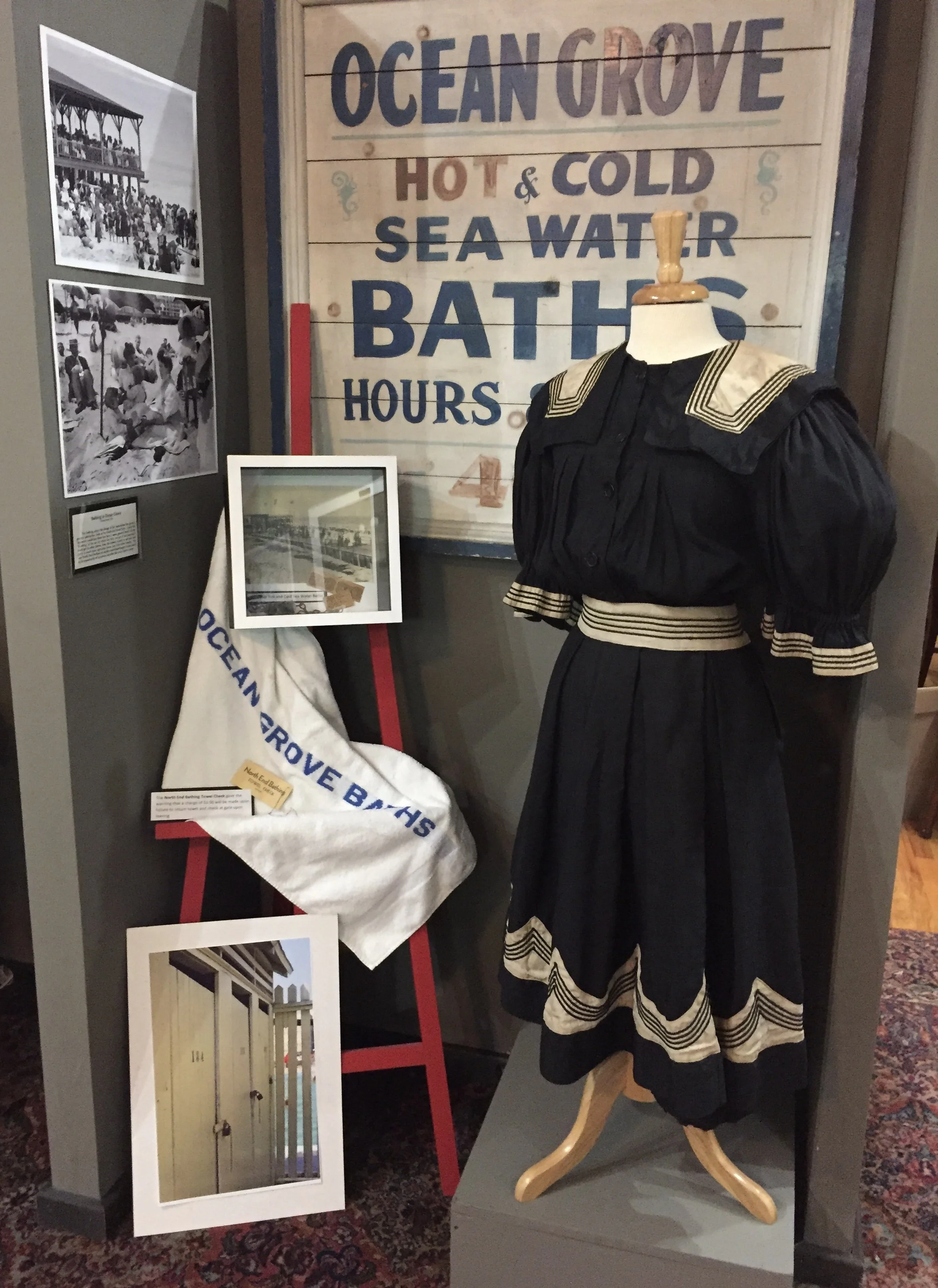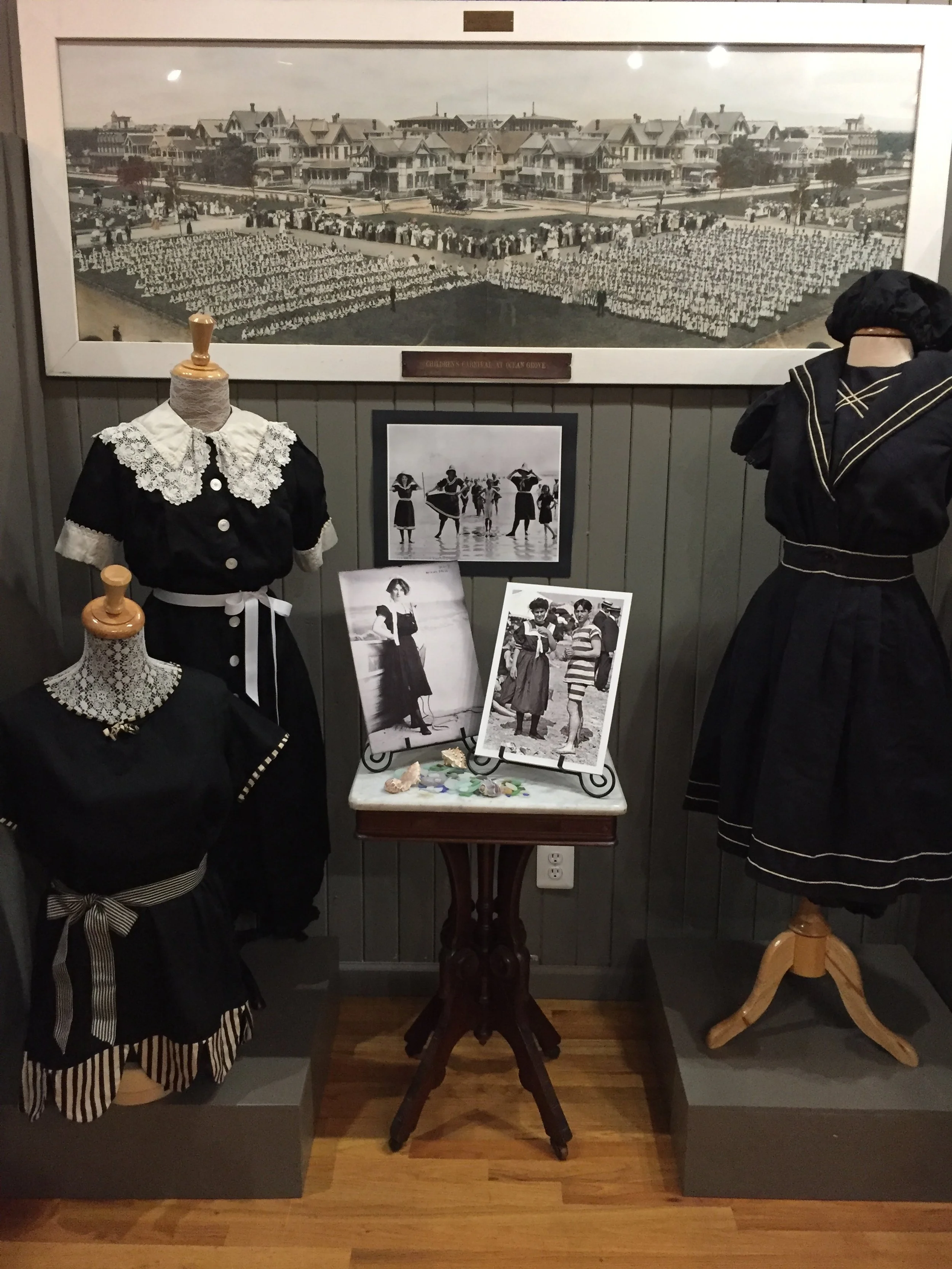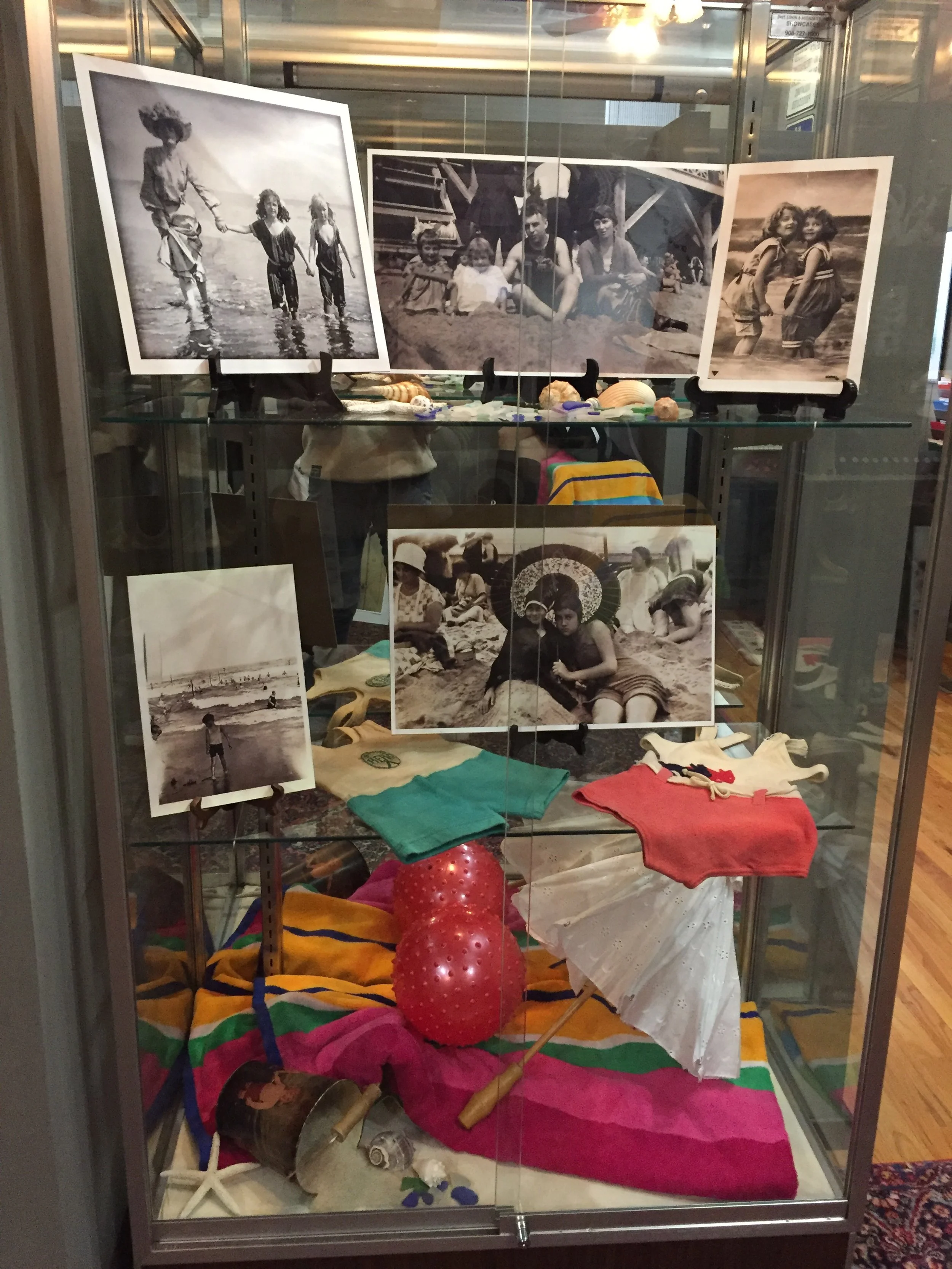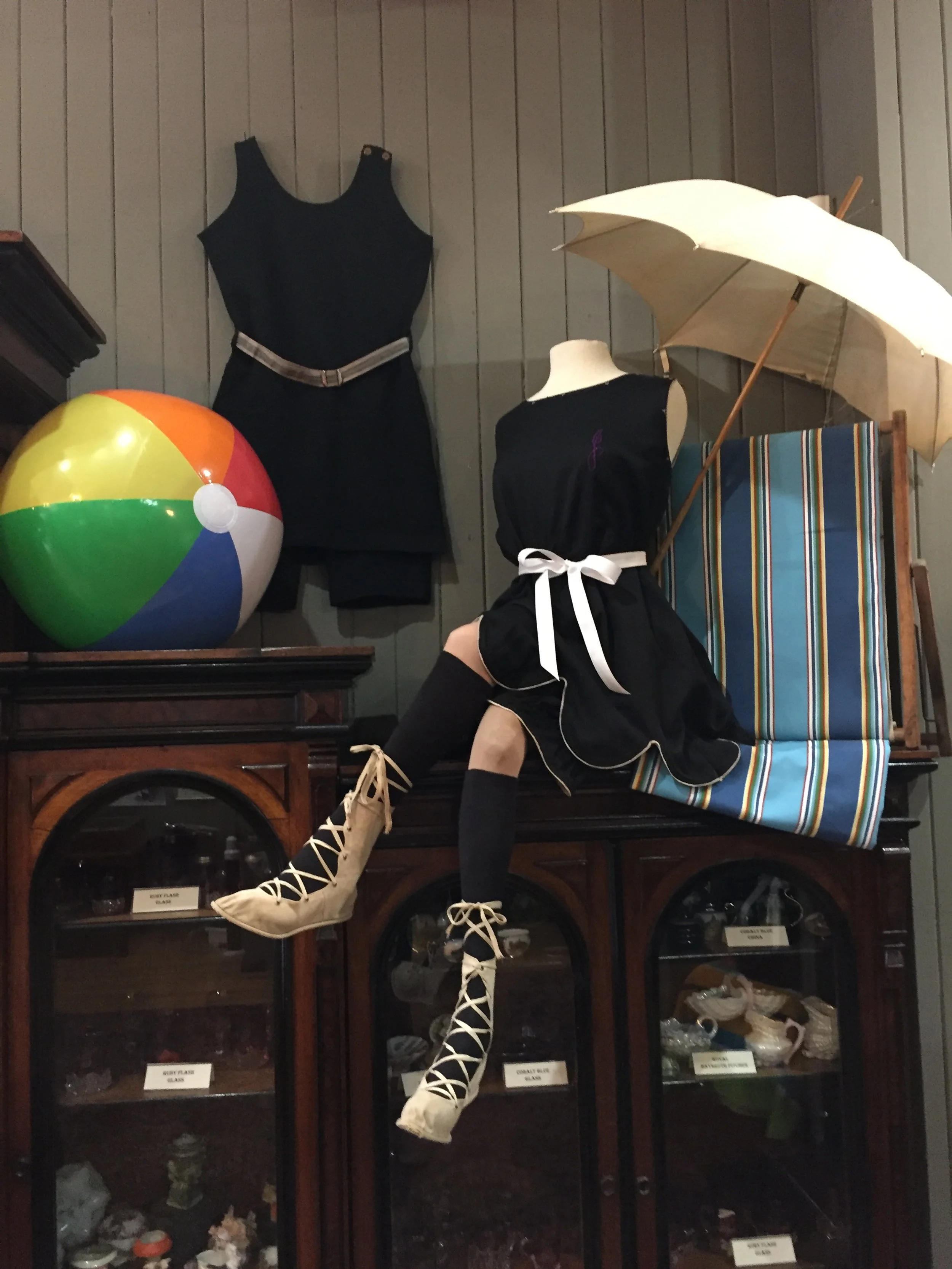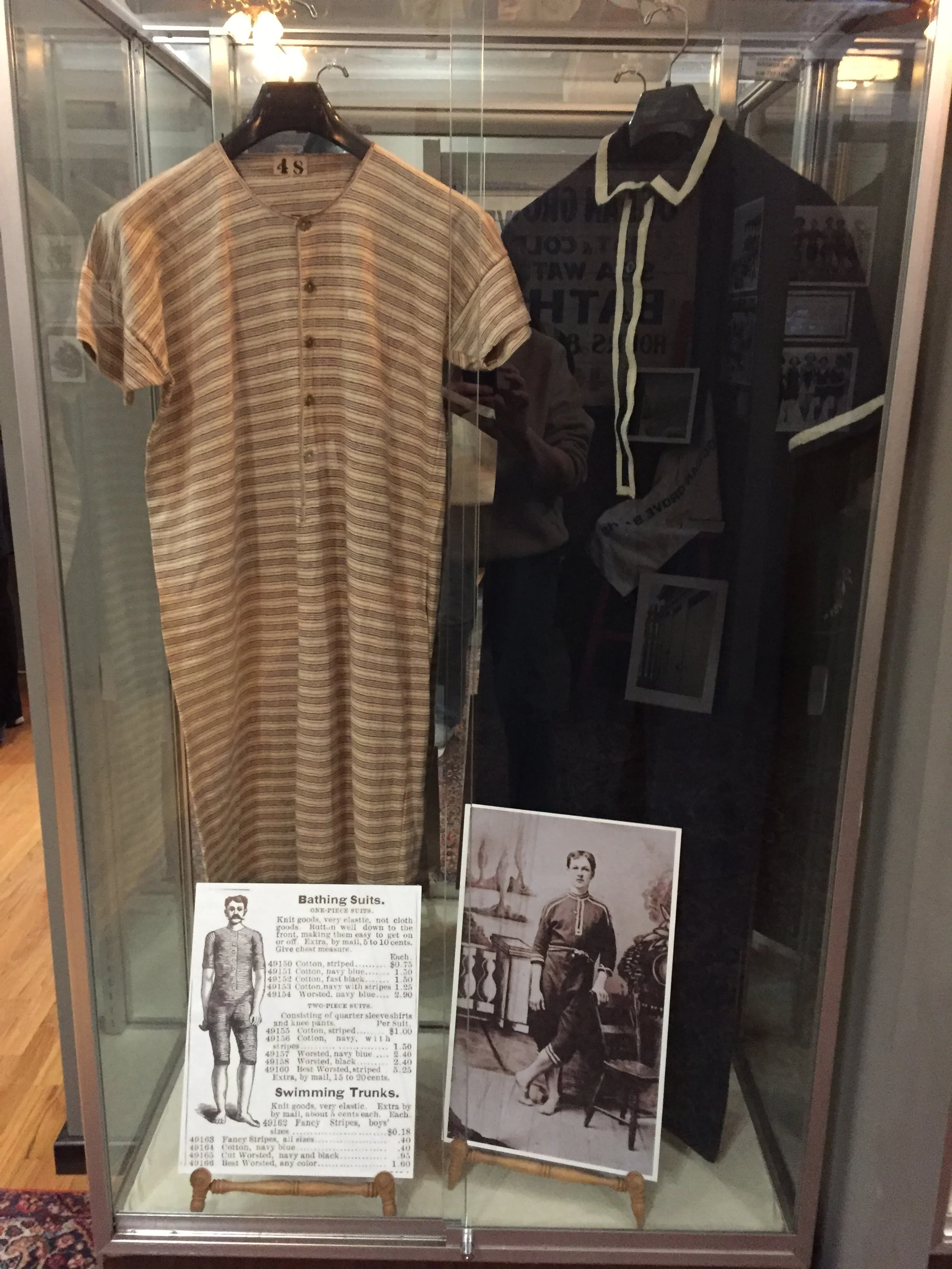
Summer 2019
Sun, Sand & Modesty
Sun, Sand & Modesty
During the early 1900s, people eagerly flocked to oceanside beaches to enjoy popular seaside activities such as swimming and surf bathing. For women, the only ocean activity permitted involved jumping through the waves while holding on to a rope attached to an offshore buoy, reflecting the modesty standards of the time. Their Victorian-style bathing suits were often quite cumbersome and heavy, making swimming more challenging. Our exhibit proudly features typical women’s and men’s suits from this era, offering a glimpse into the fashion and social norms of the period. Many of the swimwear suits on display were generously loaned by the Morris County Historical Society at Acorn Hall, which significantly enhanced the depth and variety of our own collection.
Women were required to wear stockings with their bathing suits in Ocean Grove until 1926. The use of white suits instead of the usual navy blue or black was banned until 1932.
Bathing Suits Today, almost every visit to a beach would require a bathing suit. This was not always the case in early Ocean Grove. Swimming in the nude was a common 19th century practice for males. However, attitudes changed as the century moved on. “Those Nude Bathers. We are pleased to see the stand you [Asbury Park Journal] have taken in regard to the men who, disregarding all decency, bathed Sabbath afternoon, August 23 [,1877] in full view of so many on the ocean front. And we wish to convey to you the general expression of the thousands of law-abiding visitors to your pleasant borough, and to Ocean Grove, of the condemnation of such behavior, and this by men who are supposed to understand what is decent and right.”
Even when bathing suits were worn by men, some were deemed objectionable. “I would call your serious attention to a subject that demands your immediate action. I allude to the bathing costumes worn by certain gentlemen on the beach---a mere apology, and aggravation of nudity. It seems to me that where our wives and daughters are bathing common decency should require gentlemen to habit themselves within the rules of modesty. As it is, “tights” are beginning to disgrace your beach and outrage the sight of ladies.” Ocean Grove acted on this matter on 20 June1878. “Be it enacted by the Trustees of the Ocean Grove Camp-meeting Association of the Methodist Episcopal Church: That bathing in a nude state or in indecent bathing apparel is hereby prohibited at all times within the limits of the jurisdiction…and any person offending…this by-law shall be punished by a fine of two dollars ($2) [about $64 in 2025] or imprisonment in the county jail for five days. The earliest “bathing suits” were ordinary clothing worn into the water. [Abridged from David Fox’s article 2020]
Find out more about the Bathing Suit Controversy of 1870
Men’s Swimwear
An abridged version of the full article “Men’s Bathing Suits: “We Don’t Want Gorillas on Our Beach” by David H. Fox
Topless Men and Ocean Grove Ocean Grove enforced modesty standards for men’s beachwear as early as 1891, when a man was fined for wearing an “improper bathing suit” in public. Rules required full covering to and from the beach, and signs were posted warning against indecent dress. Early men’s swimsuits featured long sleeves, pants, belts, and even stockings. By 1910, styles had shortened, but bathing shirts were still mandatory. Other towns, like Bradley Beach, also banned shirtless swimsuits. In the 1930s, swimsuit designs evolved, and shirtless styles became more common, though still controversial. Atlantic City and others resisted, fearing “gorilla-like” appearances. Public opinion shifted by 1939, with 67% approving of shirtless bathing. Ocean Grove remained strict until the 1940s, and as late as 1971, appearing shirtless in public areas was still prohibited. Today, under Neptune Township, only general decency laws remain in place.
From the Archives…
“I think I shall never see
A man beside the ocean sea
That looks the least bit nice or cute
Wearing a topless bathing suit.”



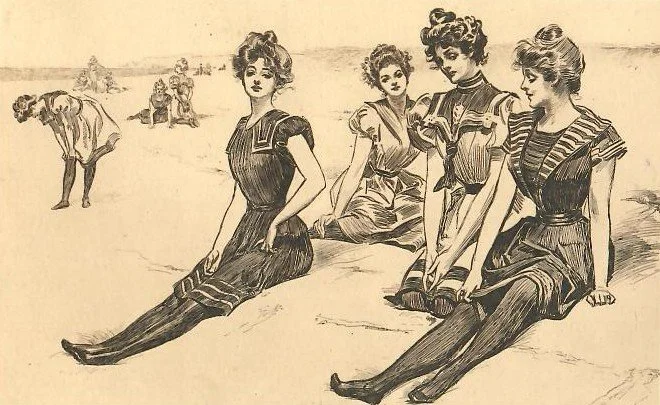











Beach Accessories
Research by David Fox (2025)
Bathing Hats
-
No bathing outfit was complete without headwear. Various styles appear in early images. Some were worn as part of normal dress.
“Gentlemen, on arriving at the Grove, generally lay aside their "store clothes" and don a flannel shirt, coarse pants, and immense bathing hat.”
-
A local Ocean Grove product was a shoe patented in 1877 and manufactured by C. C Clayton, the owner of a department store on Main Avenue. It was made of canvas and cork.
-
Originally, people had no problem sitting directly on the sand in regular clothing, and those in bathing suits might recline in sand depressions called “wallows.” However, these positions were often criticized for being immodest. A critic once described the sight of bathers reclining under umbrellas, reading books, as “disgraceful.” By the late 19th century, sitting on blankets became popular to avoid sand, and chairs designed for the beach emerged. The first beach chair-like seating was developed in northern Germany by Wilhelm Bartelmann in 1882, known as the strandkorb, providing shade and wind protection. While the strandkorb became popular in Europe, it did not reach Ocean Grove. In the U.S., Helen Petrie of Boston patented the first beach chair in 1892, which included a folding fabric backrest and mat.
-
The use of parasols and the larger rain umbrellas appeared in the earliest images. However, the expansive beach umbrella did not debut until the early 20th century. By the 1920s, Ocean Grove’s beach was a sea of colorful umbrellas.
-
Sand pails and shovels were manufactured by 1885 but cannot be detected in early Ocean Grove images. These metal items were often given colorful finishes.


